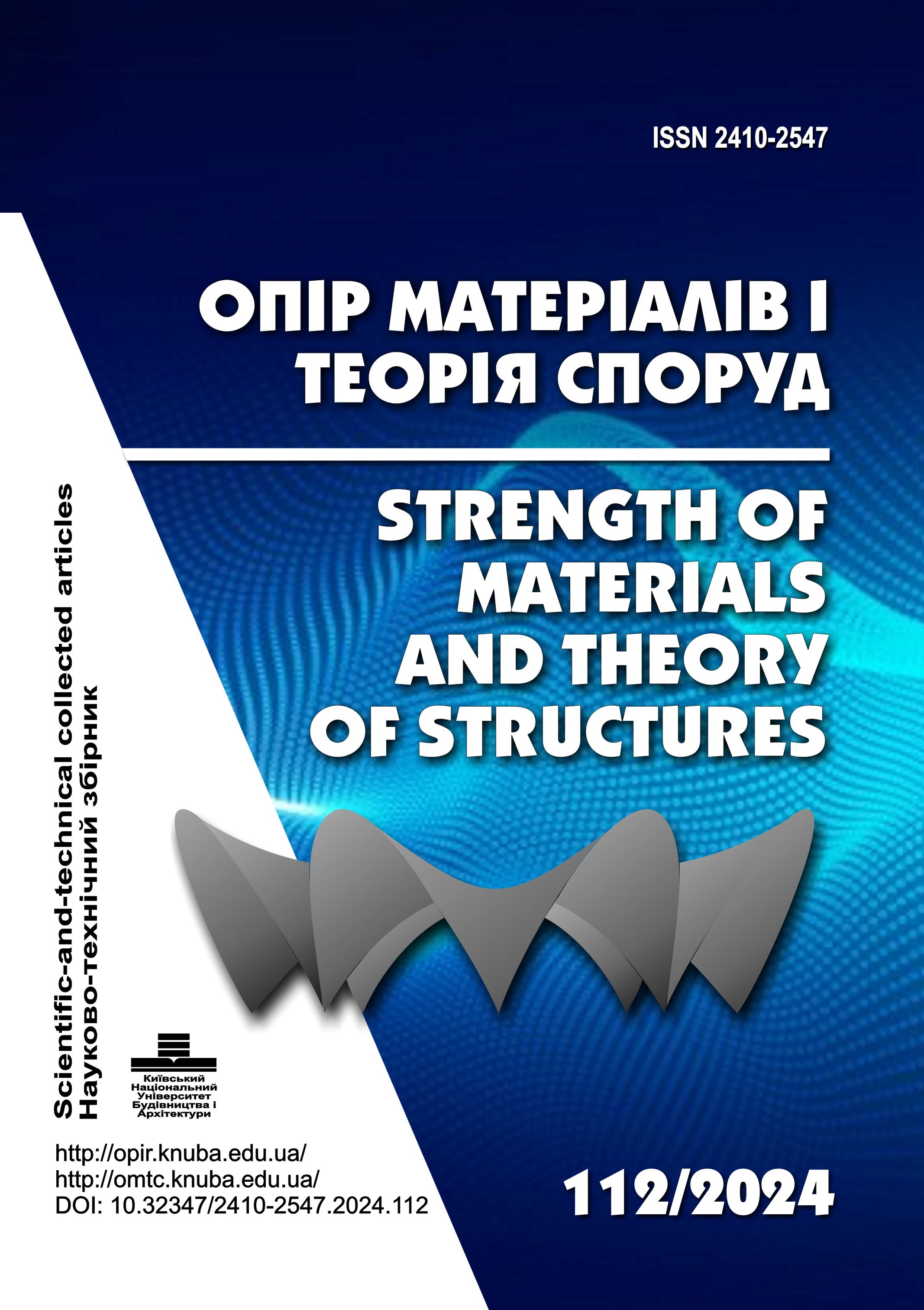Determination of stress intensity coefficients using PC LIRA CAD
DOI:
https://doi.org/10.32347/2410-2547.2024.112.132-138Keywords:
finite element method, crack, stress intensity factorAbstract
Today, the issue of involving fracture mechanics approaches to the calculation of structures with cracks is becoming more and more relevant. For the most part, the implementation of such approaches is carried out using software complexes in which the finite element method is implemented. Among them, such software complexes as Abaqus, Ansys, Nastran stand out, where the implementation of fracture mechanics approaches is constantly being improved. However, the cost of licenses for the use of such complexes, especially in the conditions of Ukraine, does not allow most researchers to fully use such programs. Therefore, it is relevant to study the possibility of applying fracture mechanics approaches in software complexes, the use of which is free. In construction, a significant number of structures are isotropic bodies. Operation of most of them is accompanied by elastic deformations. If there are cracks in them, the load-bearing capacity is assessed using stress intensity factors (SIF). This article examines the possibility of determining the TIN based on the results of the specified stress-strain state obtained with the help of the free software package "PC LIRA-SAPR 2016 R5 (non-commercial)".
The calculation of SIF is performed by a direct method based on the determined distribution of displacements and stresses around the crack tip. The crack is modeled by setting appropriate boundary conditions.
Implementation of the direct method is performed in 2 ways. According to the 1st method, the SIF calculation is performed in the apical area according to the values of stresses and displacements. According to the 2nd method, the SIF is calculated by moving the node closest to the top of the crack. Approbation of the approaches was carried out on the test problem of tension of a plate with a central crack. A study of the influence of the dimensionality of the discrete model and the types of finite elements both outside the apex region and in the apex region itself was conducted. The obtained results showed the possibility of obtaining reliable SIF values in this software complex in two ways, subject to compliance with certain rules for building a discrete model.
References
Napivanalitychnyy metod skinchenykh elementiv u zadachakh ruynuvannya til z trishchynamy (Semi-analytical method of finite elements in problems of destruction of bodies with cracks)/ [V.A. Bazhenov, S.O. Pyskunov, O.O. Shkryl]. – Kyyiv: Vyd-vo “Karavela”, 2017. – 208 s.
Spravochnik po koeffitsiyentam intensivnosti napryazheniy: V 2 t. (Handbook of stress intensity factors: In 2 vols.) / Pod red. YU. Murakami. M.: Mir, 1990.
Pyskunov S.O., Shkryl O.O., Maksymyuk Yu.V. Vyznachennya trishchynostiykosti rotora parovoyi turbiny pry diyi obyemnykh syl (Determination of crack resistance of a steam turbine rotor under the volume forces action)/ Opir materialiv i teoriya sporud. – 2019. – Vyp. 103. – S. 57-62 13.
V.A. Bazhenov, S.O. Pyskunov, Yu.V. Maksymyuk, O.O. Shkryl. Otsinka resursu korpusu stopornoho klapana parovoyi turbiny pry termosylovomu navantazhenni z urakhuvannyam formozminennya (Estimation of the resource of the steam turbine stop valve housing under thermoforce loading, taking into account deformation) // Problemy prochnosty (Strength of Materials - Springer) -2022. N4 C.56-64
Solodey I.I., Kozub YU.H., Stryhun R.L., Shovkivska V.V. Analiz alhorytmiv rozvyazannya heometrychno neliniynykh zadach mekhaniky v skhemi napivanalitychnoho metodu skinchennykh elementiv (Algorithms analysis for solving geometrically nonlinear mechanics problems in the scheme of the semi-analytical finite element method) // Opir materialiv i teoriya sporud: nauk.-tekh. zbirnyk – K.: KNUBA, 2022. – Vyp.109. – S. 109-119
Anderson T. L. Fracture mechanics: fundamentals and applications. / [T.L. Anderson]. – CRC press, 2017. – 688 p.
Annenkov A. Monitoring the deformation process of engineering structures using BIM technologies.The International Archives of the Photogrammetry, Remote Sensing and Spatial Information Sciences, Volume XLVI-5/W1-2022 Measurement, Visualisation and Processingin BIM for Designand Construction Management II,7–8Feb.2022, Prague, Czech Republic.
Isaev O., Annenkov A., Demianenko R., Chulanov P. Monitoring of the elements stability of building constructions by means of example of vertical elastic rod of high flexibility. Strength of Materials and Theory of Structures.No.109(2022).416-425
Downloads
Published
Issue
Section
License

This work is licensed under a Creative Commons Attribution 4.0 International License.
Authors retain copyright and grant the journal right of first publication with the work simultaneously licensed under a Creative Commons Attribution License that allows others to share the work with an acknowledgement of the work's authorship and initial publication in this journal.

